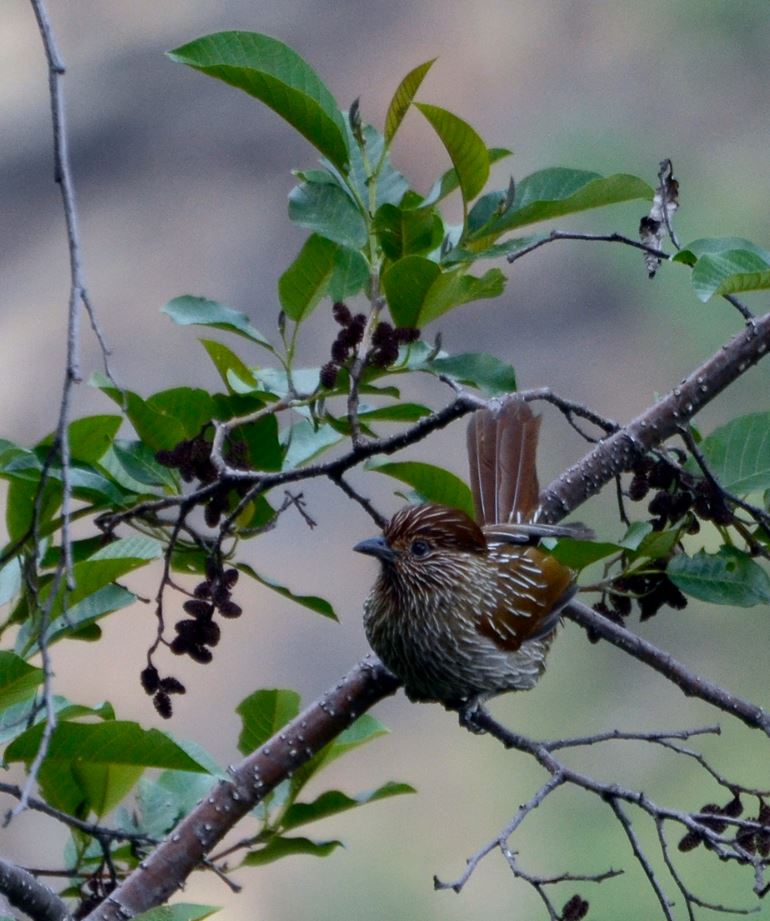The Striated-laughingthrush has a mostly brown plumage without any striking patterns. However, what makes this bird stand out is the thin, elegant white lines that cover its entire body, giving it a unique and charming appearance.
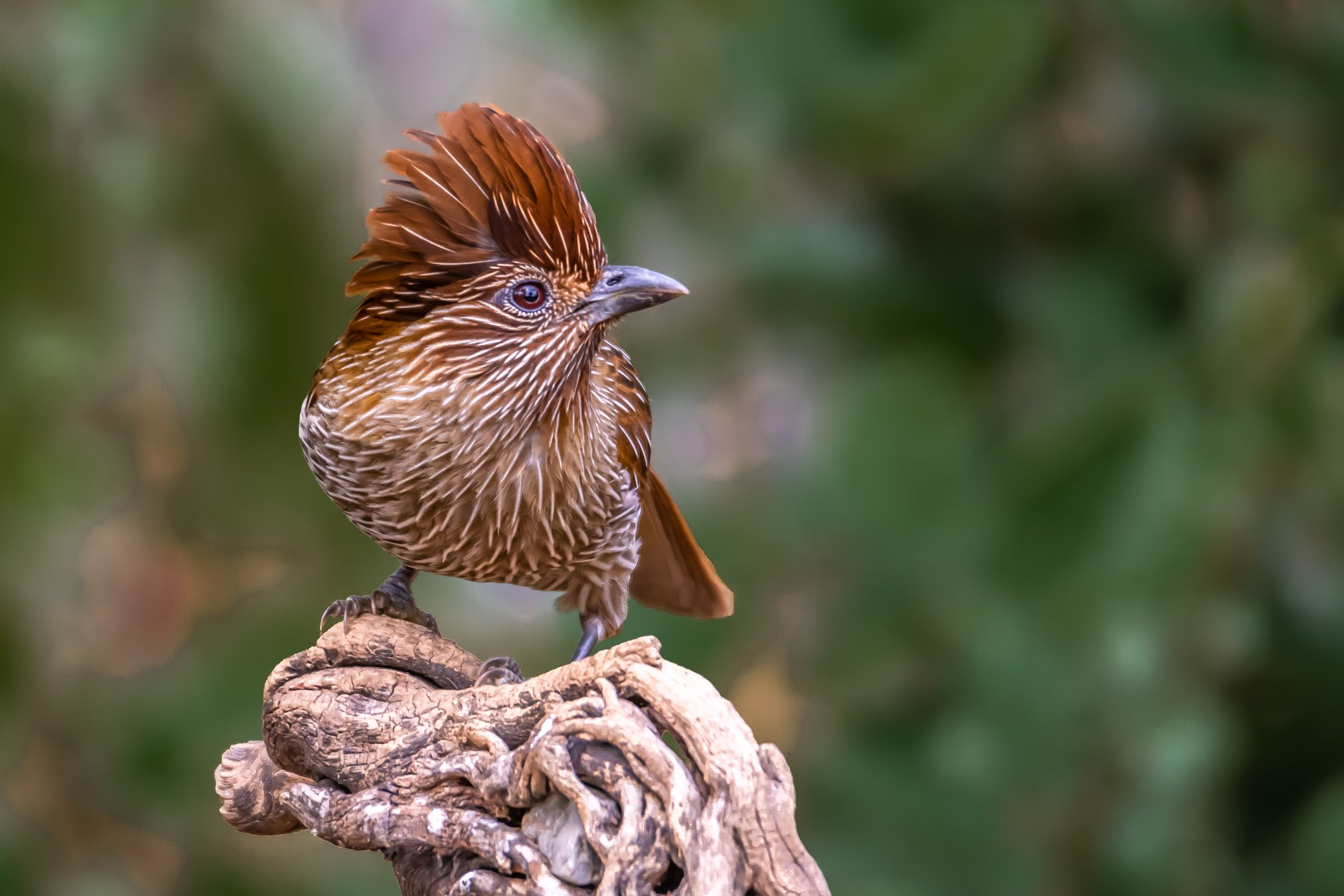
The striated laughingthrush, a member of the Leiothrichidae family, is a passerine bird with beautiful coloring. Its upper plumage, sides of the head and neck, chin, and throat are a deep umber-brown, gradually becoming lighter on the lower parts. A distinguishing feature of this bird is the long median white streak on each feather on both the upper and lower parts, including the wing coverts and tertiaries. These streaks are more noticeable on the chestnut-colored tail feathers, which have a small white tip. The quills are dark brown with some showing a hoary outer web or a pale chestnut hue. The bill is black, the legs are dusky plumbeous, and the iris is reddish-brown, according to Jerdon.
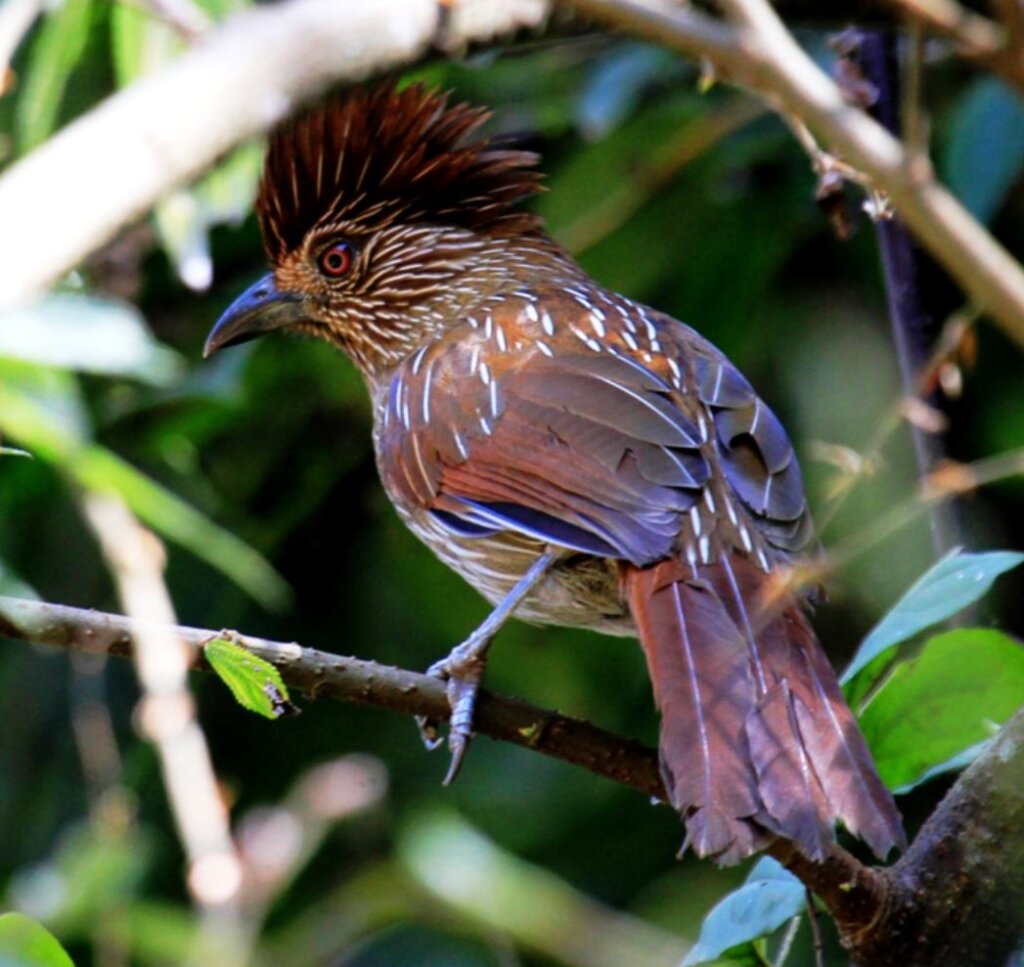
This laughingthrush has a distinct appearance with a small beak and a fluffy, full crest. It bears a striking resemblance to the barwing, although it is darker in color and lacks noticeable markings. The bird’s body is predominantly brown, adorned with delicate white lines that are as thin as a pencil.
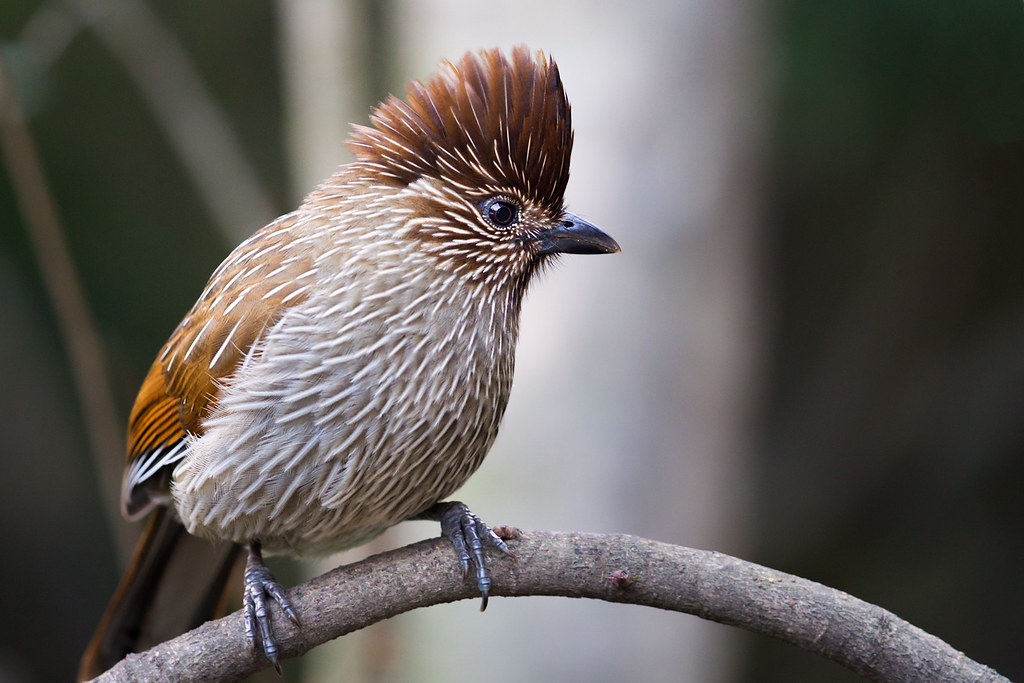
The Himalayas are home to this particular type of creature, and it can be found in the Sutlej valley up to Bhutan, at altitudes ranging from 6000 to 9000 feet. There have been some reports of it being present in Birbhum, Bengal, but these are probably inaccurate.
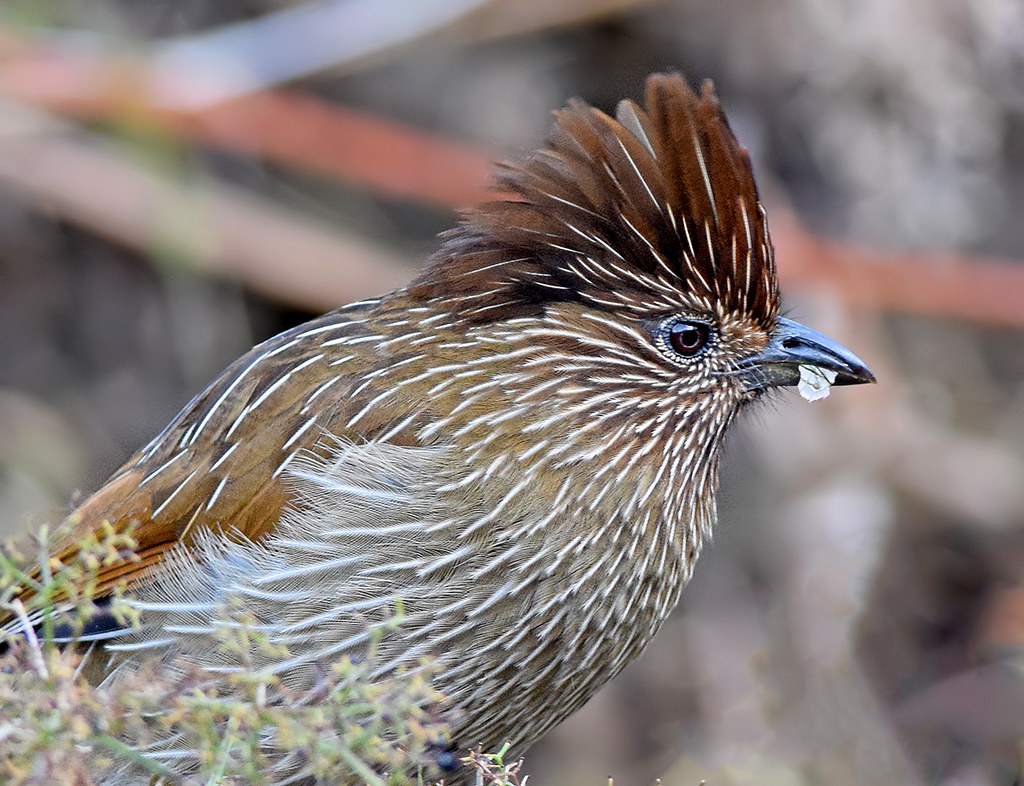
The places where this species usually lives are in forests that are moist and subtropical or tropical. This can be either in lowland forests or in mountainous forests.
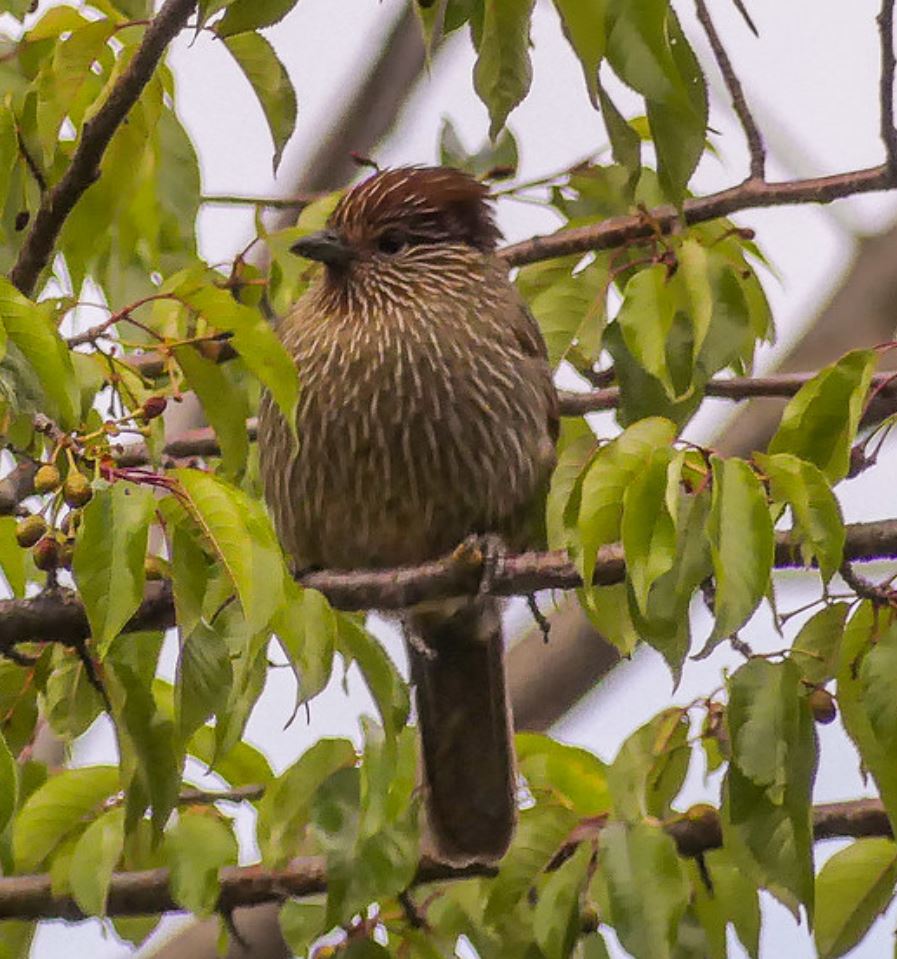
The bird usually looks for food in the middle to lower levels of its habitat. It can be seen scavenging on the tall tree canopy, lower branches, and undergrowth. This species eats a range of foods from beetles to berries and seeds. It is fond of aromatic wintergreen, flowers, rhododendron, and even gelatinous lichen.

